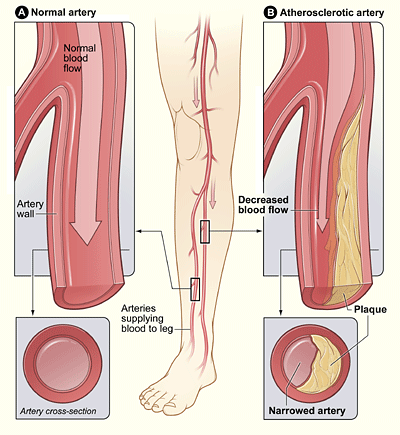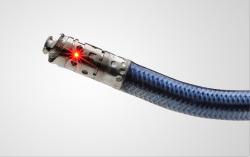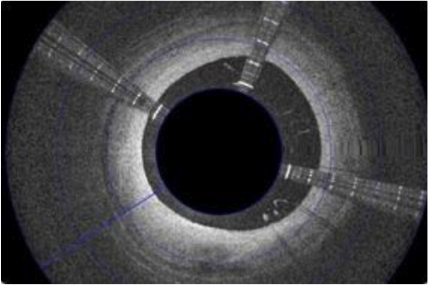Peripheral Artery Disease |
|
|
Peripheral arterial disease (P.A.D.) is a disease in which plaque builds up in the arteries that carry blood to your head, organs, and limbs. Plaque is made up of fat, cholesterol, calcium, fibrous tissue, and other substances in the blood. When plaque builds up in the body's arteries, the condition is called atherosclerosis. Over time, plaque can harden and narrow the arteries. This limits the flow of oxygen-rich blood to your organs and other parts of your body. P.A.D. usually affects the arteries in the legs, but it also can affect the arteries that carry blood from your heart to your head, arms, kidneys, and stomach. P.A.D. increases your risk of coronary heart disease, heart attack, stroke, and "mini-stroke" (NIH.gov). Arkansas Heart Hospital (AHH) has successfully enrolled and treated the first patient in the U.S. in a new FDA trial using the Ocelot catheter with Optical Coherence Tomography (OCT) that provides advanced treatment of Peripheral Artery Disease (PAD). This treatment has the potential to prevent amputations, eliminate the need for bypass surgeries and prolong lives. The device is a catheter (left image) with a small drill guided by a camera that provides intravascular imaging in order to facilitate the treatment of PAD. Additional general information:
Additional technical information:
|
Normal artery and artery with plaque buildup.
OCT is used in minimally invasive surgery and
Real-time intravascular imaging using OCT. |






